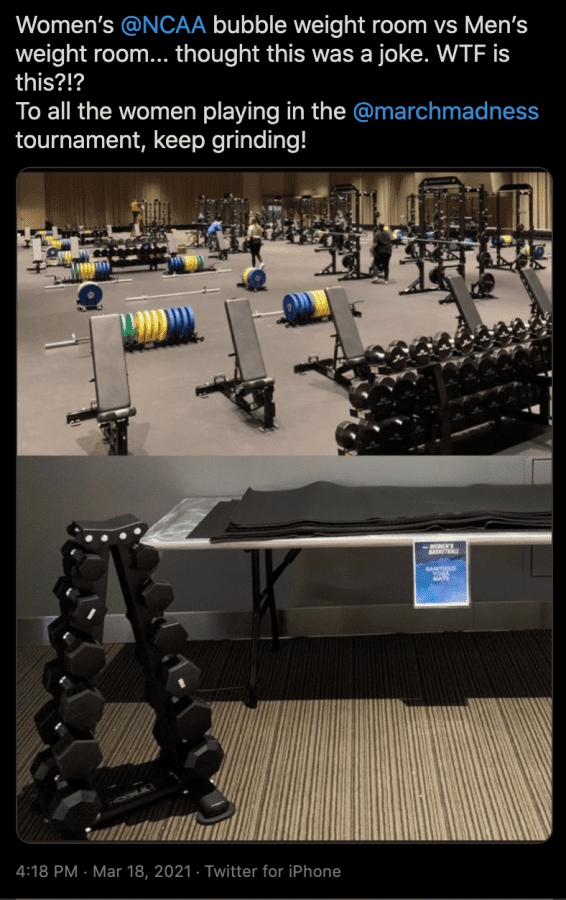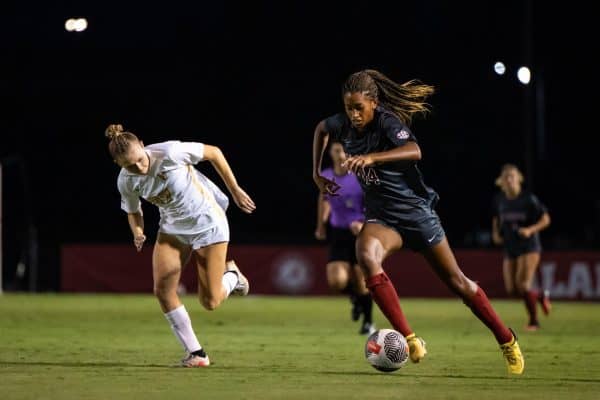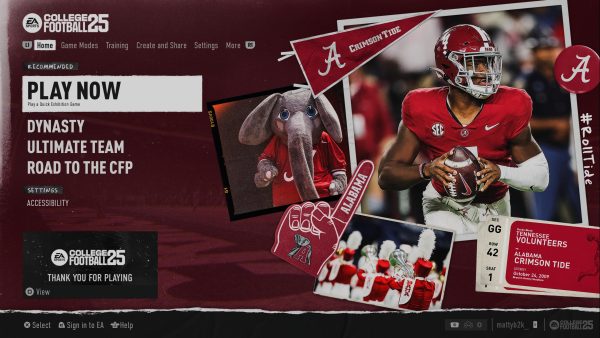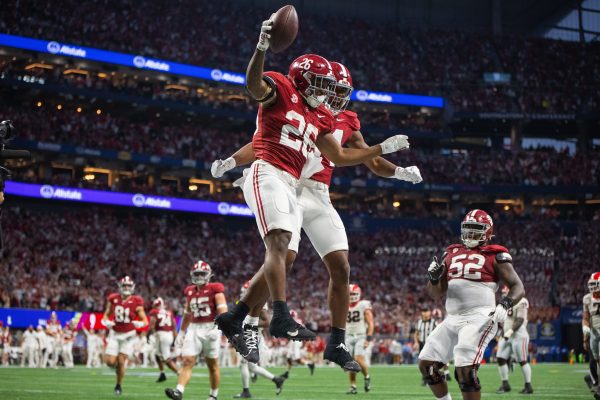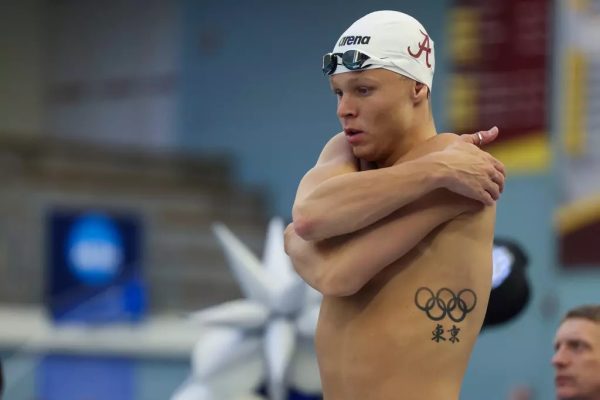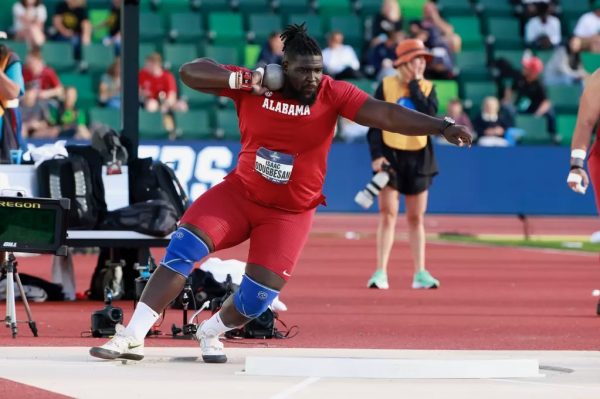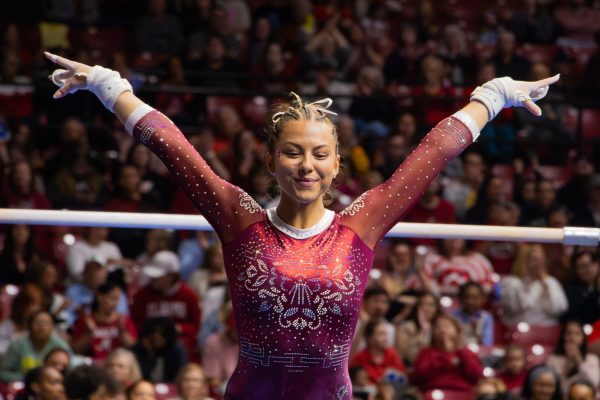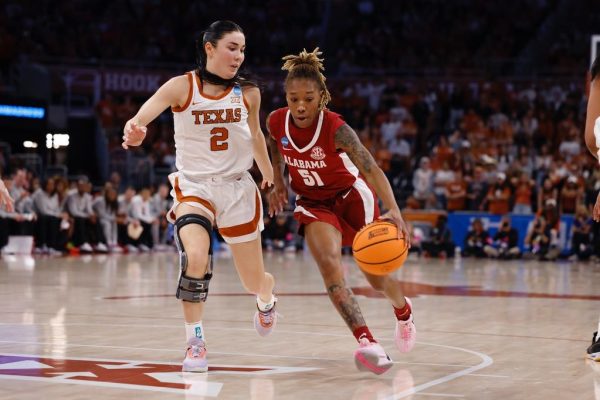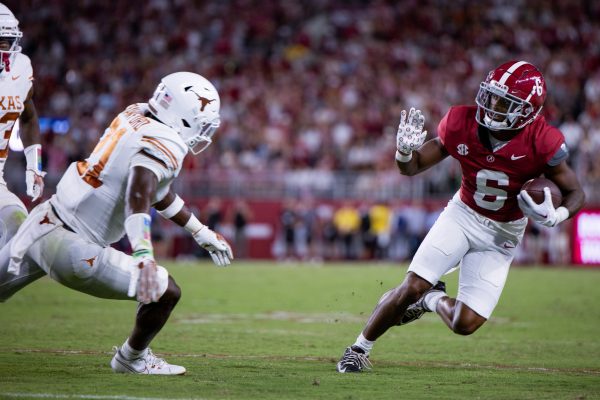‘We came to win’: How the NCAA disappointed its female March Madness contenders
Kristy Curry and some Alabama athletes spoke out about the unequal treatment of women’s basketball players.
March 24, 2021
In Indianapolis, men’s basketball players enjoyed a shiny set of bench presses, dumbbells and squat racks that spanned the width of a weight room at an NCAA training facility. But in San Antonio, women’s players arrived at a bare facility, outfitted with a single set of dumbbells and a stack of “sanitized yoga mats.”
The NCAA is a nonprofit organization with a collection of over 1,000 universities that come together to provide athletic competition to everyone at an equal level. But after a viral video, some athletes are reigniting conversations about the gender gap.
Title IX was passed in 1972 to give women equal access and rights to play sports at public schools and universities that receive federal funding. According to its own website, athletics programs are considered educational programs and activities. There are three basic parts of Title IX as it applies to athletics:
- Participation: Title IX requires that women and men be provided equitable opportunities to participate in sports. Title IX does not require institutions to offer identical sports but an equal opportunity to play;
- Scholarships: Title IX requires that female and male student-athletes receive athletics scholarship dollars proportional to their participation; and
- Other benefits: Title IX requires the equal treatment of female and male student-athletes in the provisions of: (a) equipment and supplies; (b) scheduling of games and practice times; (c) travel and daily allowance/per diem; (d) access to tutoring; (e) coaching, (f) locker rooms, practice and competitive facilities; (g) medical and training facilities and services; (h) housing and dining facilities and services; (i) publicity and promotions; (j) support services and (k) recruitment of student-athletes.
Videos and pictures surfaced last week that showed disparate accommodations at men’s and women’s NCAA training facilities. The pictures showed the difference in the food quality, the gear that players were given by the tournament and, infamously, the weight rooms provided for each group. After the videos and pictures surfaced, NCAA Vice President of Women’s Basketball Lynn Holzman released a statement that said the NCAA was working to accommodate the athletes.
“In part, this is due to the limited space and the original plan was to expand the workout area once additional space was available later in the tournament,” part of the statement read.
Shortly after the statement was released, a video posted by Oregon women’s basketball player Sabrina Ionescu went viral. The video showed a massive space that was completely empty. Professional athletes of all sports erupted on social media calling out the NCAA for its wrongdoing. Later, Holzman responded to the hypocrisy of her statement.
“It did pull the curtain back on some of the issues surrounding our sport,” Holzman said. “What that opened up was a conversation about where there may be disparities between women’s sports and men’s sports. I’m actually happy that this conversation has opened itself up, and I think it is really important for us to continue that conversation so that we can continue to move forward and make some differences that will support our sport.”
Alabama head coach Kristy Curry and Alabama women’s basketball seniors Jordan Lewis and Hannah Barber have continued to discuss the disparities of the women’s tournament since arriving in San Antonio.
“It needs to get better. It needs to be better,” Curry said. “The administration and the support of our sport will grow and learn from this.”
Curry said later that the players were fully committed to focusing on the tournament and winning every game they played. Both Barber and Lewis echoed that sentiment throughout the week.
“Our main focus is to keep doing what we do to keep winning games, so all the external factors, we’re trying to block those out,” Barber said. “By putting a good product on the floor, it’s going to attract more fans—that’s what we’re really focused on: just continuing to play hard, bring a lot of energy and put on a good game for people to watch.”
The quality of the women’s tournament amenities has improved. Since the viral video, Ionescu has posted almost every day complimenting the boxed food that she’s gotten after criticizing it in the beginning. An NCAA reporter attended an Alabama press conference shortly after the issues were said to be resolved and asked Lewis and Barber what they enjoyed about being in San Antonio. Lewis said she enjoyed the opportunity to play but did not mention any of the amenities that the NCAA said they improved on.
“We’re just grateful to be here at the end of the day,” Lewis said. “It is a basketball tournament and we’re here to win basketball games. I think that’s the mindset you have to take. Everybody has seen it, everybody has their own opinions but at the end of the day we’re just here to win basketball games.”
The women’s tournament is on a much tighter schedule than the men’s. The tournament began Monday, four days before the men’s tournament, and is set to end one day earlier than the men’s tournament. Curry ended a press conference earlier in the week saying that continuing to play gives the women the best chance to have their voices heard.
“We need to see that women’s basketball [is] put on an equal playing field,” Curry said. “Yes we’ve talked about it with our team. I think their focus and intensity and their energy is on making the world a better place every day. They’re going to continue to have voices, but I think the biggest voice they want to have right now is that we came to San Antonio to win. We want to focus on the things we can control. But we will also continue to speak and create a platform for every little girl who wants to be just like them [and] to be treated exactly the same.”

